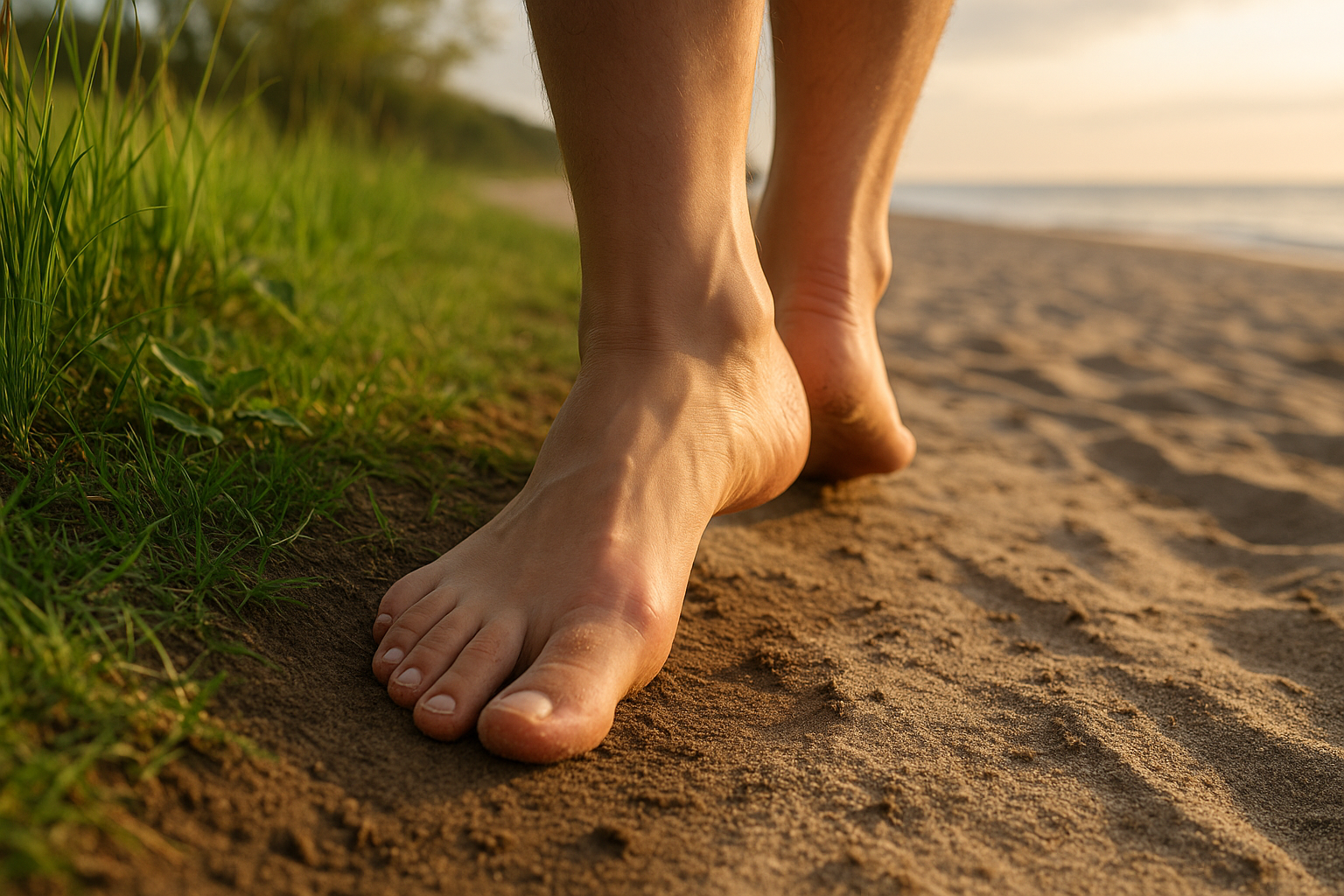"Unraveling the Health Benefits of Grounding: A Connection with the Earth"
Have you ever considered the potential health benefits of walking barefoot on the grass or along the beach? Grounding, also known as earthing, is a practice that reconnects our bodies to the earth's natural energy, offering an array of potential wellness benefits. In this article, we delve into the science behind grounding, its possible health advantages, and how you can incorporate it into your daily routine.

An Introduction to Grounding
The practice of grounding refers to direct skin contact with the earth’s surface, such as walking barefoot or lying on the grass. It’s a fundamental concept that dates back to our ancestral roots when humans had a more intimate, physical connection with the earth. Grounding is based on the principle that the earth emits negative ions, which can be absorbed by the human body and neutralize free radicals, potentially reducing inflammation, improving sleep, and boosting overall health.
The Science Behind Grounding
Several studies have explored the grounding concept and its potential health implications. For example, a 2012 review published in the Journal of Environmental and Public Health found that grounding could improve sleep, reduce pain, decrease stress, and enhance overall well-being. However, more extensive research is needed to confirm these findings and understand how grounding influences the body at a cellular level.
The Potential Health Benefits of Grounding
Grounding is believed to offer a host of health benefits. It might help regulate the body’s circadian rhythms, promoting better sleep. Some supporters claim it can reduce inflammation and chronic pain by neutralizing free radicals. Grounding may also decrease stress levels and improve mood by affecting cortisol, the body’s primary stress hormone.
The Challenges and Credibility of Grounding
While the grounding concept sounds promising, it’s not without its challenges. For instance, urban living might limit access to natural, unpaved earth surfaces for regular grounding practices. Also, scientific skepticism prevails due to a lack of extensive, peer-reviewed research confirming grounding’s health benefits. However, as interest in this wellness practice grows, more comprehensive studies are likely to emerge.
Grounding Techniques to Try
- Barefoot walking: Strolling barefoot on grass, sand, or soil is a simple way to practice grounding.
- Grounding mats: These mats mimic the earth’s energy and can be used indoors, providing an alternative for those with limited outdoor access.
- Gardening: Handling soil barehanded while gardening can also help achieve grounding.
In conclusion, grounding is an intriguing wellness practice that reconnects us with the earth, offering potential health benefits. While scientific consensus is still emerging, preliminary research and anecdotal evidence suggest that grounding may improve sleep, reduce inflammation, and enhance mood. As we continue to explore the connection between our bodies and the earth, grounding represents an accessible, natural health strategy worth considering.






